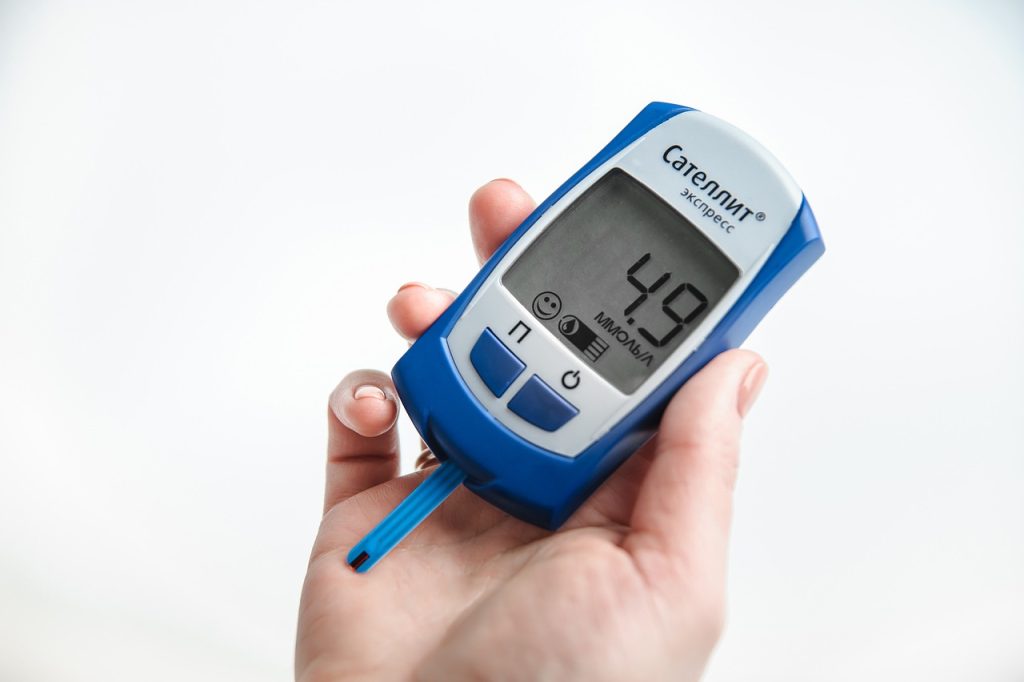Each November we mark both National Diabetes Month and Diabetic Eye Month, timely reminders that diabetes isn’t just about blood sugar numbers, but a condition that affects our health, vision, energy, and even our lifespan. Diabetes also has impacts that reach beyond the individual, as it also has a deep impact on our communities, including right here in Orleans County, where rates are higher than the state average. This month it’s time to start talking the talk, walking the walk and changing the trends that are impacting too many of our friends, family members and maybe even you.
What is diabetes? Great question. At its core, diabetes is a condition that affects how the body turns food into energy, and we all need energy to live. According to The Mayo Clinic (www.mayoclinic.com), Diabetes is a group of diseases that affect how the body uses glucose, the main energy source for muscles, tissues, and the brain. There are two chronic forms of diabetes: type 1 and type 2 diabetes. You may have also heard of “prediabetes,” which is a condition that is still reversible. In Prediabetes, it’s when your blood sugar is higher than “normal,” but not yet crossing into the limits that diagnose diabetes. There is also a condition known as gestational diabetes, which develops during pregnancy and often resolves after childbirth. Type 2 diabetes is the most common form, and most found in Vermont and Orleans County, while Type 1 cannot be prevented. Thankfully, healthy lifestyle changes can help prevent or delay Type 2 diabetes.
Why does this matter? Long-term high blood sugar can have damaging impacts on nearly every system in the body. It increases the risk of heart disease, stroke, nerve damage, kidney failure, amputations, and vision loss. The longer diabetes goes uncontrolled, the higher the chance of complications and the shorter the average lifespan for the patient. THIS is why diabetes matters because it affects more than blood sugar. It affects how long and how well we live. As more Vermonters are being diagnosed with diabetes, this matters! The Vermont Department of Health shares their data on healthvermont.gov which is gathered from multiple sources, and the numbers are concerning:
Diabetes and cardiovascular disease together account for 27% of all deaths in Vermont.
Orleans County has higher rates of diabetes and heart disease than the state average, along with Caledonia and Essex Counties.
Since 2016, diabetes-related hospitalizations have increased, while primary-care visits have declined: a sign of worsening disease management.
Vermonters with disabilities and those of lower socioeconomic status have significantly higher diabetes prevalence, showing and validating ongoing health inequities.
Around one in twelve (8%) or approximately 40,100 adult Vermonters have been diagnosed with diabetes, but the number is higher in Orleans County.
These numbers make it clear: diabetes isn’t just a statewide issue. It’s a local one and a preventable one.
In addition, November is also Diabetic Eye Month. According to The Mayo Clinic (www.mayoclinic.com): Diabetic retinopathy occurs when high blood sugar damages blood vessels in the retina, the light-sensitive tissue in the back of the eye. In the early stages, it may cause no symptoms at all but over time it can lead to blurred vision and blindness. These risk factors include long-standing diabetes, poor blood-sugar control, high blood pressure, and high cholesterol. The National Eye Institute (www.nei.nih.gov) shares that more than half of people with diabetes will develop some form of diabetic retinopathy in their lifetime. That means even if your vision seems fine, yearly eye exams are critical. Detecting changes early can prevent permanent vision loss.
What is one thing you can do today to help prevent yourself from diabetes? MOVE! All the healthcare greats will tell you that when it comes to diabetes prevention and control, one simple prescription that always stands out: movement! Yes, physical activity is a major component to seeing quick results on blood sugar, blood pressure, cholesterol and many other contributing factors to chronic disease. Physical activity literally allows the body to use glucose for energy, which can reduce the need for as much insulin and lower fasting blood sugars. Small amounts of consistent physical activity, such as 10-minute walks after meals can change the lives of prediabetics and those with type two diabetes by lowering post meal spikes, helping to maintain healthy body weights, and reducing blood sugars. Movement lowers stress, strengthens the heart, and boosts the mood, all of which help prevent complications of diabetes.
We can reverse the trend of high diabetes rates now if we make it a personal and community-driven priority. This November, as we observe National Diabetes Month, we can remember diabetes is not just about numbers, it’s about quality of life. If you want a long, healthy and quality life with great vision, strong heart health, and a community that values well-being, we need to take this knowledge and put it into action to turn the trends. Reach out to a healthcare provider today for questions and concerns. If you are interested in free support or classes, visit myhealthyvt.org for more information. Through awareness, movement, and supportive community action, we can help every person in Orleans County live longer, see more clearly, and feel stronger with less diabetes. The power to change is in community!


